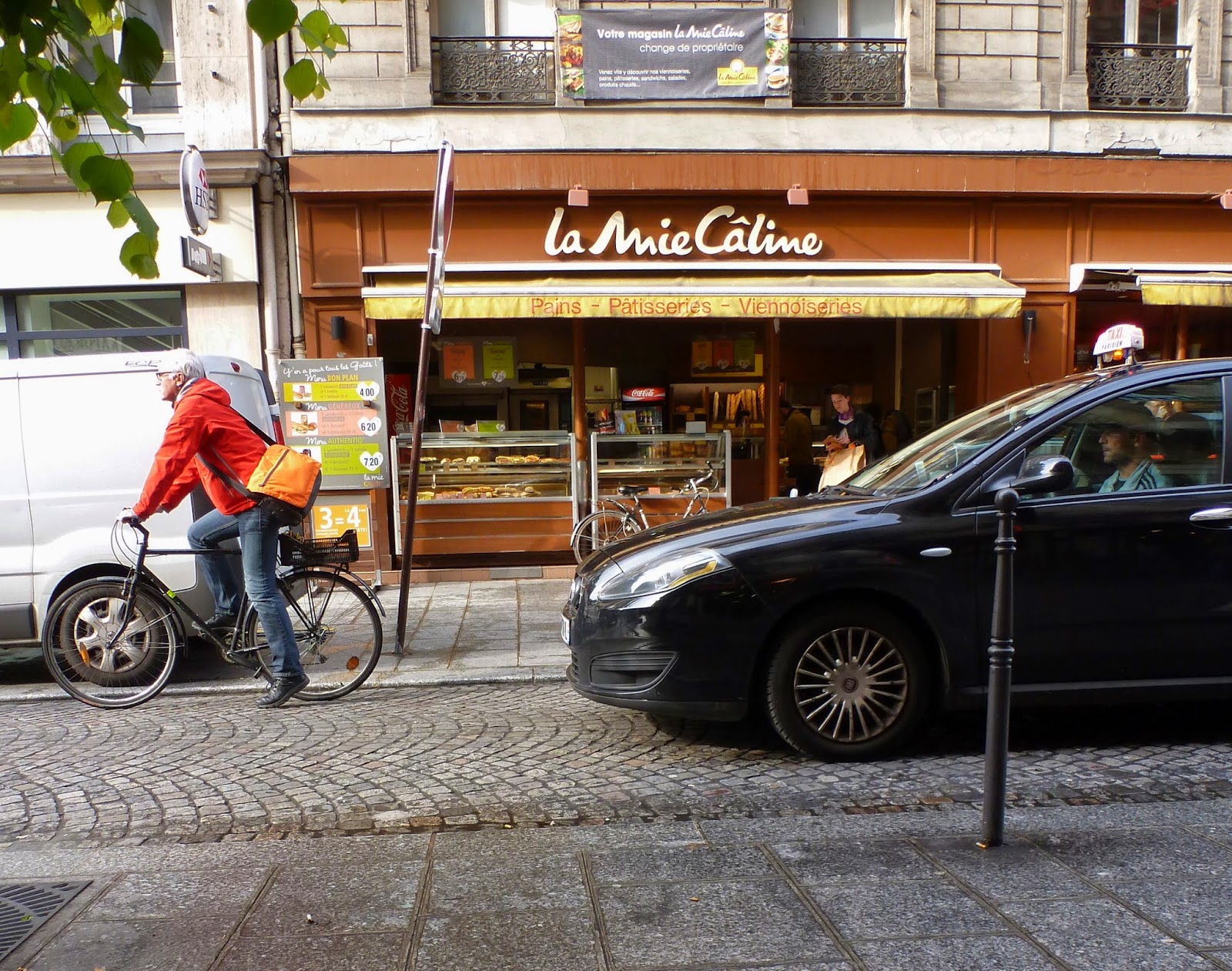Paris is an old city, and old is an understatement. Many buildings stand here that are centuries old, filled to the brim with rich history. Today, countless people make their own pilgrimage, so to speak, to this city of grandeur to see for themselves the Notre Dame Cathedral, the Mona Lisa, and the French men with curled mustaches and berets. Though they may see the famous sites, Paris may not be quite the city they had imagined, perhaps something like this:
Here they would sit and eat a baguette with cheese while listening to someone serenade them with La Vie en Rose on the accordion.
Paris is no longer the quaint city it once was. In fact, it is practically a modern tourist trap. Overpriced vendors line the roads, myriads of cars, buses, and people riding bikes seem to follow their own traffic laws in the streets, and even more people walking fill the sidewalks and buildings in the popular parts of the city.
It is interesting to see the metro system today. With some hints of its age, but many more hints of its modernity.
But is Paris headed in the right direction? Or have the modern technological advances taken restorations and renovations a bit too far just to make or save a dollar? I mean, are the pressed coin machines really necessary in the cathedral? Whatever happened to the idea of, you know, worshiping in the church? Are people coming to the city to cross things off their bucket list hoping to earn bragging rights? Are people losing sight of why the buildings were made and what significance they actually hold today?
Though it is definitely a change from the Paris in the past, that’s simply how life is. It changes constantly. If it were the same as it was centuries ago, we would have need for much concern. The technologies we have today really can enhance our experience in the big city and make everyone’s lives easier. Perhaps instead of preserving the old, we should learn how to effectively use the new so our future can be totally psychedelic because we're living the present with the past in mind.
(These photos have multiple inspirations. The first, geometric shapes and lines from Cartier-Bresson; the second and last from Doisneau for being moments that happened instead without planning; the third and fourth have a grainy quality reminiscent of Eggleston.)





No comments:
Post a Comment